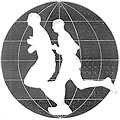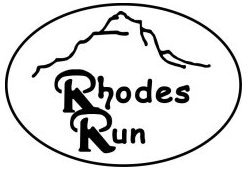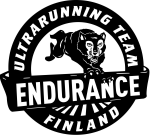World Run II / Reports
|
Loading...
|
|
The map shows the position of which the pictures for the day are taken (if any).
The start and finish markers are placed at the first and last valid registered position.
This is not nessesary the actual start and finish position, if GSM or GPS signals was not available.
|
Goto:
![]() 2011-11-22
2011-11-22
![]() 2011-11-24
2011-11-24
![]() Colombia
Colombia
Distance today: 50.0 km (Accumulated: 30560.0 km)
Elapsed time: 04:33:02
Country: Colombia
Start 09:40am., 24c, humid, overcast & light wind, at km-stone "027 / 2504A" on hwy. 25A to Manziales. Finish 15:25pm., 37c & same, at km-stone "46 / 2505" on hwy. 25 to Manziales.
The 30 000km report :-)
As you can see from the gps-track (endomondo-link below) the road has now become flat after about 2½ months of mountain running. Add to this the superb support I had from one of the sponsors visiting lately, Reino who is ceo. of the Pyroll industries group in Finland, and you have a near ideal setting for long distance running. So, finally there is some surplus to write the 30 000km report after an enjoyable 50km on good roads, in a friendly contry and with fairly cool climate to run in (ok, 37c and humid, but it could be much worse ;-)
30 000km
How to sum up 3T.km, 3 continents and 3 years of running ? Its nearly impossible to capture it all, even in the lectures I do home in Europe when not world running; but I'll give it a try and highlight the main experienses; physical experienses of how the body reacts to 30 000km, cultural encounters, different kinds of nature, a review of the quality of the equiptment I use, a review of the up's & down's of the logistics across the continents and rounding off with perhaps the most important: how it changes one's mentality.
Physical
- The 30 000km mark was reached the 7. November in Equador, about 100km from the border to Colombia. To celebrate the round point, I chose to run an 80km stage which went well despite quite mountainious terrain. But how was the state of the body at that point ?
First of all I'd say that overall the body's condition is surprisingly good considering the amount of running over the years.. 26 000km in world run one, 30 000km now in world run two and approximately 50 - 60 000 training km's since I began running longdistance competetively as a youth runner in 1983. Apparently the human body handles the hardship of longdistance running well, since there has been only two injuries during those 100 000 - 110 000km of running. One was back in the 1990'ties when falling into a road-excavation during a snowstorm in Denmark (ofcourse I should have stayed indoors, but who can resist a dramatic training run with nature at full force ;-). Knocking the kneecap on a sharp metal plate and some rocks in the fall down the hole and the resluting tennisball-size' swelling of kneecap for two to three days untill it was possible to train again. Many years later the same knee again acted up, this time in a 6day race where I by good luck found myself in the lead at day 5 and hardly could bring myself to give up the lead on the final day of the race. A very very unwise decition, obviously, as any injury or even slight sympthom should be respected and understood - insted of ignored. The effect of that were another two to three days with a severely swollen knee, this time far worse and making me look like a cross between a runner and ... an elephant as far as the knee joint was concearned ;-)
As it happens the competetion - the South African 6day Race 2008/George Archer 6day Race in Johannesburg - was my last tuneup' before the beginning of world run two. It could very well have put an end to this second world run even before it had started, had I not been lucky that the body somehow always seems to heal its injuries very quickly, and that I enjoyed excellent advice from a fellow danish ultrarunner with a medical degree who and even more essential: instructions on how to strengthen the muscles, coordination and mobility of the area to prevent future injuries of this kind.
This approach, to try to strengthen the body so it can prevent injuries itself, has always been my approach in running. Naturally its in any case better to do some brief exercises and by-pass injuries than having the training or races stopped by them ! Perhaps I was lucky that at the same time as I took up marathon running at age 15, I got an introdution to general mobility and strenght-balancing traning of the body. For my part the exercise I found most usefull of all was a very basic strength and mobility training for the feet and ancles; not very time consuming - just 3-5minutes each evening - but extremely usefull by giving the body a better possibility of balancing itself at the first impact of each running step (and there has been a few of those in 28y. of running..). Its always a matter of taste and personal preference what exercises, streatches and health-regimes a runner finds usefull, but to me this simple strengthening of the feet has proven far more effective than the streatching and general bodymucle training which I also try to find energy for at the end of each day.
But as said, its much of a personal preference. In my oppinion the main thing remains to always listen to and respect the signals from the body. As any other thing this ability to understand the signals when an injury is about to happen can be trained and perfected as to a point where you can sense the body's first tiny warnings around a week before they actually turn into injuries if you dont find out what the reason is and act upon it with your experiense or knowledge. And I think this is the main reason why there has, so far, been no injuries in relation to the two world run's. There has been pleanty of symptoms but also pleanty of solutions. From cutting the km's a bit down for a period, to more sleep, different streatching exercises, altering the food intake a bit or for example simple things as changing which side of the road I'm running at (since it gives a camber, causing a left or right leg overuse) or often even more important: to make sure the running shoes are in good shape and with fresh shock absorption. But the main issue remain to find solution which works on the reason behind the problem, to find out why the body begins to show sign or overuse, stress or injury - and Never to sympthom treat it, ie. to use painkillers or "forget the pain". Those things may provide you with a fast solution; but on long term it will also be a ticket' to long term injuries or even permanent problems.
So, all is good and well physically at this point ? Well, if you look at the pictures which goes with todays report, www.worldrun.org/report_day.php?day=2011-11-23 , you will see a few examples: The feet are in good condition, no blisters, only a few black toenails and no malfunctions etc. The legs are in normal condition too, no problems there; except from fatigue ofcourse but this I'll describe in detail below as its in my oppinion closely connected to the mental aspects when running this long. The hands are a bit insect-bitten with sun-blisters and sunburns, but nothing serious and just about the same situation as when doing the first world run back in 2004 - 2005. In fact all purely physical indicators are nearly at the state as when doing the first world run. Except for the mental wear' and... the teeth. The comment from my webmaster (who has done an exceptional job in both world run's :-)) was "what horrible pictures" when he saw the two photo's of the teeth related to the 30 000km report. Its not my intention to give people the impression that world running is painfull or overly difficult, raughter the opposite - that it IS possible and that our body is surprisingly well suited to do even these extremely long events. But, the reports, the run and the effort is nothing worth if its only parts of the truth, and the idea of the tooth-pictures' is to document that it does come with a price to run twice around the world.
The price I have had to pay, and am continuing to pay, is to let go of a few teeth. Its not possible to both have the high calorie intake that I have, and the recovery regime that I use (eating many small meals before, during and after the daily stages; including two small meals during midnight/late in the night). Its a priority decition since if I had to brush my teeth at all hours of the day, and night, Id be busy doing this and not working on the mental 'focus strengthing', dealing with the daily logistics of the run and physical recovery. So far I've lost four teeth since the start in Nordkapp 30 000km ago, along with parts and slices of three other teeth which are still haing on for a while. Its ofcourse not a pure joy to loose some of the teeth, and certainly neighter good for the concentration on the daily stages when the toothpain is sharp; but its a price I happily have paid and continue to pay when compared with the unique chance to get to know our planet intimately, its continents, its cultures and nature:
Culture & Nature
Central of the highlights of world run two this far is beyond any doubt the fantastic, remote and grand' nature and amazing hospitality and gentleness of the people of Sudanese Sahara. On my run through the Sahara Desert the brutal temperatures (reaching 40 to 50c on normal days and on occation up to 53c) were in stunning contrast to the kindness I experiensed from the population in the desolate oasis' and thinly populated areas of Northern Sudan. Such openness and friendliness to a total stranger, doing a thing which couldnt, at first glanse, be further from their daily life and reality: to run through the desert reaching for a goal on the other side of the world. Still, in many way I often fealt more connected with these people than with my contrymen back in europe. A very similar experiense as when running 10 500km across Siberia during world run one - the conditions the people face, the different sense of time, the option to dwell on life, its basic conditions and its essentials; those things you will find out there and much less in a minute-by-minute life in Europe, North America or Asia. Not that there nessecarely is something wrong with the modern lifestyle as we live it, but the deapt and 'quality of moments' you encouter under the starts of the desert with 2000km to the nearest point of electricity and tap-water, or in Siberia 5000km to the nearest non-siberian city, sourrounded by Nature in a scale we dont have elsewhere - is amongst the most treashured things I've experiensed in my 40years. As much as there in our society isnt time for the long explanations and seldom tranquility for deep philosophical dwelling, as much will you be asked those ultimate questions - by yourself, or by the locals which have had a lifetime to contemplate what living on our planet is about.
Also Equador and Colombia have been amongst the peaks of the run, with their overwhelming vareity of nature and abundance of growth; all kinds of fruits, plants, flowers, birds and with new stunning views across Andes Mountain valleys for each day of running. And the actual "peak" of the run, the Christo Redendor pass, at 4000m. altitude when running the old border route between Argentina and Chile - was just as impressive a scenery as I had imagined. Its seldom you get to run at 4000m. alt., and even more so when beeing sourrounded by some of South America's highest mountains within a few km's distance making the 4000m. seem like a small stepping stone in contrast.
But its often the things that one expect to be problematic yet which turns out to be positive, that leave the best impression. In this case again Sudan and Colombia, both of which by mainstream media very seldom is covered in the "news" except when there is something negative to report. Ofcourse the truth about any place or culture on our planet is never that simple. And so also reguarding those two contries where you may need to be a little carefull - but that too can be said about any major city in Europe - at the same time the helpfullness and friendly approach by all local people I met was almost directly opposite the image I got from the media coverage. If those two contries are as dangerous as they are portraited to be, or indeed the continents other than Europe, N. America and Australia... then it would never be possible to run straigh across them and around the world :-)
In Africa I did have a hard time during the 7-8000km running through East Africa; but apart from Ethiopia which were hostile, then it was mainly because of the quite tough challenge by lack of supplies at the remote streatches of the run as well as tropical diseases (I was sick in average once every 10days during that half year of the run; dysenteria, diarea, guardia-infection, extreme exhaustion, fever, two operations in the right arm, as well as a mild case of malaria). All in all this meant that I had to take 8months of recovery back in denmark after successfully reaching Cape Town in March 2010. During the periods of fever and deep fatigue there days, weeks and months where I didnt expect to reach that half-way point. But I did, and even though it was beyond any doubt the most difficult challenge and continent I have run across - then the experienses also holds great beauty once the hardship slowly sinks into memory and the magnitude of this continent, its problems and its intense moments surfaces.
This part is described in detail at the half-way report:
www.worldrun.org/report_1st_half.php
Equiptment & Logistics
I am very lucky to have a solid backup in reguards of sponsorships. Indeed, its a bit difficult to run for 3 years if there is no equiptment or financial support. In the sport of ultrarunning large sponsorships are unusual, and to a big degree I think this is a good thing. It keeps the focus on the athletic challenge and sportsmanship values - instead of turning it into perhaps more "business" than "sport" as for example with professional bicycling; and often the loss of the basic values results in a rise of doping problems etc. Yet, without sponsorship running around the world is not practially doable. I rely on both good equiptment and financial backup in order to make the run possible; and then for my part need to make sure to remember the values which my sport has: to always let the run and the challenge come first, Never the money or media/fame; to always listen to and respect the body and Never use the body as merely a tool for the willpower of the mind.
But these are general words, in details its a matter of a sponsored total budget with a 6-figure amount in euro; where Ecco covers the large main part and makes sure the run is possible at all. Other sponsors cover parts of the locally related expenses, especially Pyroll where the support also has been outstanding ! In that case the ceo., Reino Uusitalo from Finland, has even visited and joined me in the daily run and struggle where it was most needed: in Mozambique in Africa - a point where the fatigue and tropical diseases nearly had me stop, and in Colombia - where security concearns could have drained the energy yet with this kind of apparently fearless company, it quickly becomes a matter of focusing on the run and forgetting the worries :-)
Other parts of the sponsorship relates to the items I use; essentially the babystroller which I ran with through Europe, the Middle-East and North Africa; the 'Rolls Royce' of babyjoggers by Chariot from Canada, sponsored by ABC-Kids from Denmark. The expedition-tents, sponsored by Outdoor Oasis in Denmark. The running clothes, where I in South America and North America use Newline - earlier in the run I used Craft but I've found Newline to be considerably more durable and with less 'bling' and fancy details getting in the way or broken, so their clothes are far more suited for this kind of extreme challenge than Craft. The Website design sponsor Them.com and Nokia which has provided 3 gps-phones and spare batteries along with Endomondo wich has helped adjusting their system to provide live gps-coverage as well as the gps-documentation of the run.
Still the main post also here is covered by Ecco which besides the main financial sponsorship provides the running shoes for the 40 000km of running ! Its been a pleasure so far to notice the progress in their runningshoe technology, from a point at the beginning of the run where they were still 'learning the game' to the present where they are at level with the top 3 producers on the market :-) I enjoy that spirit of constant trying to improve and to be unafraid to set high goals and commit fully to them - that is why I in the first place found them a good 'fit' for world run two !
On the other hand there are equiptment and logistics solutions which has caused me problems. There has been some 'hichups' with the Endomondo system since its hard requirements which a run of this length puts on the performance, mainly issues with battery consumption beeing too large and making it difficult to gps-track stages when running longer than 60km's. But its always a bit of a puzzle to make high-tech IT gadgets fit to out-in-the-field requirements and ultitmately its matter of keep trying untill the solution is good enough to function even in the remotest corners of the world :-)
At the absolute other end of the scale are a few products and services which has surprised me negatively. Ofcourse there needs to be a bit of air-transfer between continents and here I made the mistake of using SAS (Scandinavian Airlines - though I imagine its letters has changed meaning to Should Arrive Soon). When travelling to the startpoint in South America, Punta Arenas in Chile at the Southern tip of the continent, I was send to many exotic places in South America instead of where I was supposed to, but I was lucky to finally arrive before the start 01. January 2011. My luggage and running equiptment wasnt this lucky and first turned up a few days later - by good help from not SAS but a friendly local airline. Its probably a bit too hard words, and after having been similarly delayed when travelling to competetion races abroad two times during the 8month 'rest' then I should have been more clever than to keep relying on their by then slogan "the worlds most punctual airline"; as a political scientist by education I should have remembered that one can show anything with statictics ;-)
On the positive was an excellent experienses with dutch KLM when I had to very quickly and briefly visit my family in denmark while running in Peru as my father had died. I had the joy of sharing many run's, training and marathons with him and we both started running at the same time back in the 1980'ties. KLM took care of the transport with excellence and much helpfullness in this sad situation.
A little comical equiptment experiense has been with the stopwatches I use: I started out with a state-of-the-art Casio "Tough Solar" watch w. compass, altitude-sensor, temperature measurement etc. It lasted less than 3months/4000km. Apparently it was not that "Tough" as it leaked in water after a few rainfalls while running through Eastern Europe. Now I use a cheap Chinese brand which works perfect and cost around 20 usd.... and not 600 usd. as the Casio ;-)
Mentally
- To me the most dramatic change through these first 30 000km of the run has been in relation to how one deals with the challenge of the run; both the totality of the 40 000km distance as well as the daily 10-100km stages.
Obviously the mental approach to extreme distance like is central during the preparation period in the years leading up to the start. But essentially one can only build and exercise imagined scenarios of what motivational challenges there will be - once on the road, the reality will often show completely unexpected obstacles, and, solutions :-)
One of the first unexpected challenges came from an overeager danish sportsjournalist who after one km, at the start at Nordkapp in Norway in 2008, asked the no-no question "How does it feel to have 39 999km in fron of you ?". Journalists often asks fairly uniform questions and it can become routine-answers, but this one definately was new. If there is one thing you need to be certain not to focus on, then its how many km's there is left ! You can focus on how many you have run, how many contries, regions or continents you have behind you; on experienses, on fascinating nature, cultures or dramatic and interesting challenges in front of you (as for example the 4000m. pass in Argentina/Chile was for me through 20 000km of running), or on chocolate waiting after the daily stage or other rewards you create :-) There are literally endless oppotunities to create motivational points. But you try by all ability NOT to think of the totality in front of you. I think it will have about the same effect on other people if they sit down and think about exactly how many days at work they have left in their lifetime, and count them all up; or a schoolchild beeing presented with the total amount of days left to attend school and do homework for. Not the most brilliant way of positive motivation one can find ;-)
Ofcourse the thought, "How much is left", can't help pop up occationally no matter how much you work with positive mental build-up each day. Especially the round key-figures are dangerous in that sense; the 10 000km mark, the 20 000km mark, the 30 000... Each prompting you to consider "Aha, only 30 000km left". Atleast now the inner comment is "Less than 10 000 to run" :-)
But beyond the humor, which by the way is one of the strongest tools one can find to overcome these kind of endless challenges, then there are actually more grave mental challenges.
When struggeling very severely, as mainly through the half year in East Africa of batteling tropical diseases while still running the daily stages, you reach a point where the mental strain perhaps is at its limit. Where its been surprising how mild the 30 000km has been on the body, injuri-wise, then the same cant be said reg. the mental struggles. Three laptops, a windshield on a supportcar, four cellphones and numerous minor items has fallen victim of the 'Viking temper' when the mental strain of yet another stage of the African part of the run w. fever, 30-40c, high humidity and finishing the day by throwing up next to the expedition tent - has become just a tiny little bit too much ;-) Even though there is only one to blame, which ofcourse is myself as I have chosen this challenge, and consider it the thing I find most rewarding (but also most difficult) in life, then there is no end to who is to blame in those "impossible" situations where you are alone under a, briefly-, unfriendly sky, feel rained on by thunderstorms of un-luck and an infinity of both mental but certainly also physical tiredness which makes a marathon run or an ironman distance appear as a tea-time-exercise. In those situations you are more alone than anyone on this planet, I guess, as no one else is in that situation; a situation which is next to impossible to really explain as it is in its nature, beyond extreme.
Still, there are solutions. And that solution nearly almost is good friends who time and time again has send an encouragining word, a message which suddenly turns the perspective from the utter self-pity of the extreme athlete to that of everyday life and its joys and consearns. At other times the solution comes from the huge inspiration the nature throughout our planet provides in all its amazing detail, tempthing me to continue just a little bit futher around the world :-)
And when none of that works one can always turn to Scandinavian stubbonness for inspiration; there are pleanty of people who have faced far greather challenges, as for example the success of Roal Amundsen in his race towards the South Pole, Vitus Bering making it across first Siberia and then through unknown waters to Alaska, ... or the first known cross-continent runner, Mensen Ernst from Norway who two centuries ago ran from Europe to India and Europe to North Africa. Or indeed the Vikings who sailed out from Greenland to take land at what is now New Foundland, Canada. As it happens the same place world run two is amied at finishing, the North-Eastern Point of North America.
Ofcourse, the tree latter eventually died during their expeditions. So one must try to stay carefull :-)
Well; that sums up the 30 000km report. As you can understand when all is boiled down - what matters most duing this challenge is how the motivation and mental challenge is handled. I think some of the pictures from todays report catches it: If you look at the photo's by the end of the picture series, of the children competing at the rollerscating ring. That is to me what sport and running is about - To Give All and forget about money, problems, precautions and be' in that intense moment between the starting gun and the finish line.
I try to be in that state during the world run's. And on the best days I am just that :-)











